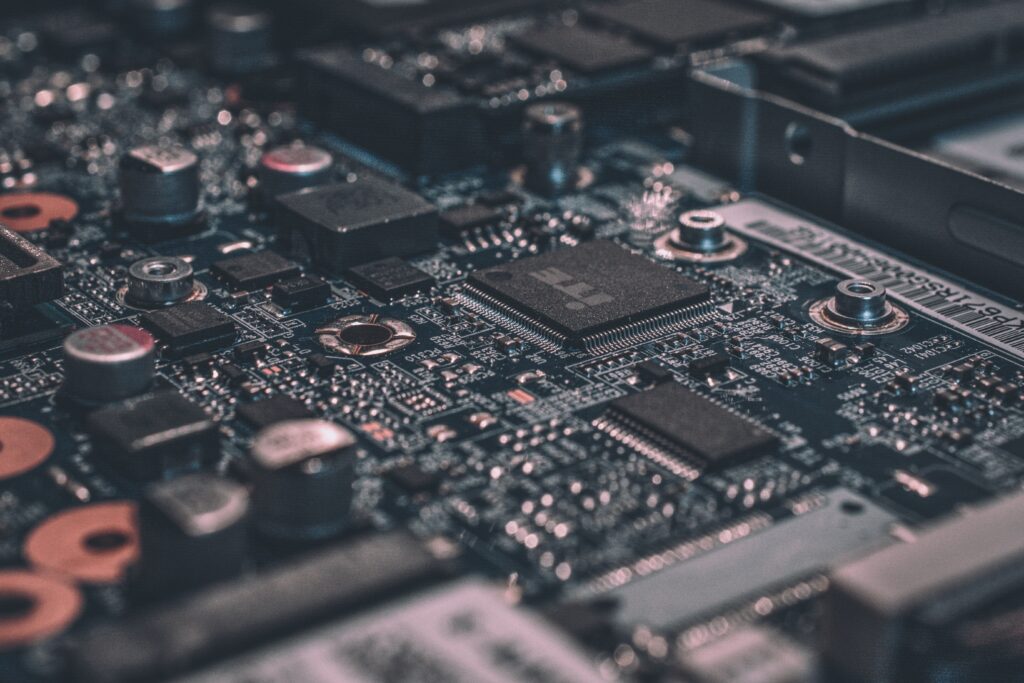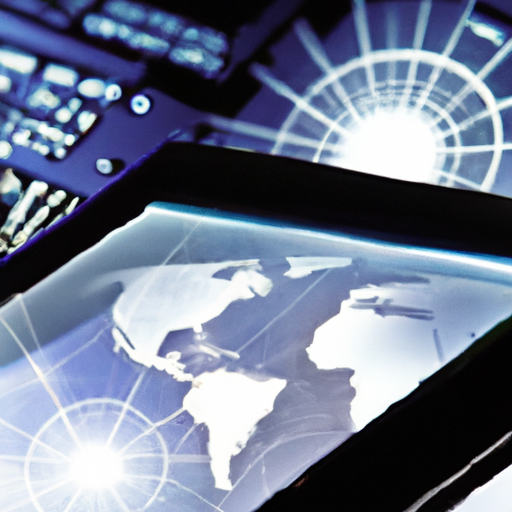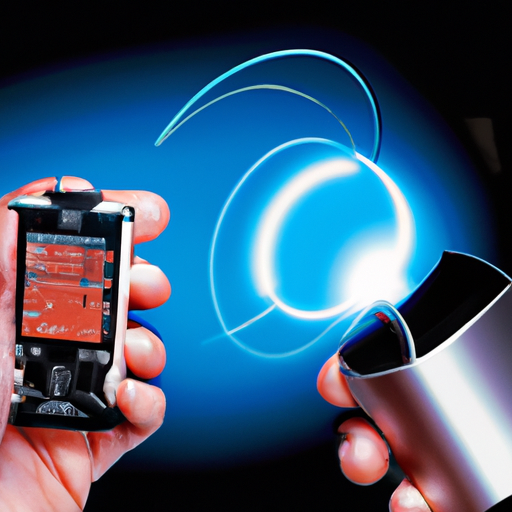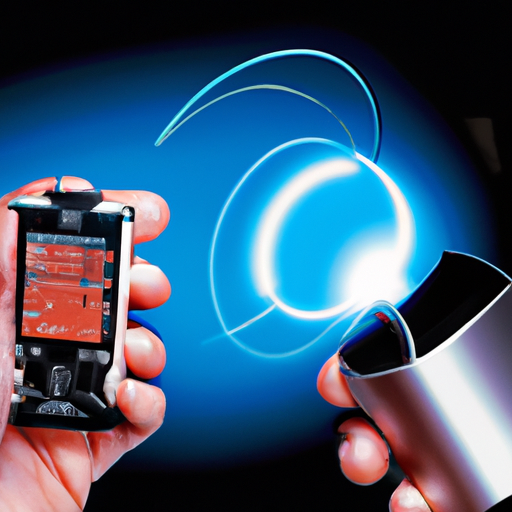Are you prepared for unexpected emergencies? Introducing “Disaster Prep: Smart Devices for Emergency Situations,” a comprehensive collection of high-tech gadgets designed to keep you safe and connected during times of crisis. From state-of-the-art communication devices to life-saving tools, these smart devices are the essential companions for any emergency situation. Whether you’re facing a natural disaster, a power outage, or a medical emergency, Disaster Prep ensures that you have the technology you need to stay informed, secure, and in control. Don’t let an unforeseen event catch you off guard – equip yourself with Disaster Prep and be ready for anything that comes your way.
Introduction
Defining smart devices
In today’s technological age, smart devices have become an integral part of our daily lives. But what exactly are smart devices? Smart devices are electronic gadgets that can connect to the internet and perform various tasks beyond their basic functions. They are designed to make our lives easier and more convenient, and they have also proven to be extremely useful in emergency situations.
Importance of smart devices in disaster preparation
When disaster strikes, being prepared can make all the difference. Smart devices play a crucial role in disaster preparation, providing us with communication, power, weather updates, lighting, and navigation tools when traditional infrastructure might be compromised. These devices are designed to be portable, durable, and efficient, making them essential tools in emergency situations.
Communication Devices
Smartphones
Smartphones have become an indispensable part of our lives, and their importance in emergency situations cannot be overstated. With their ability to connect to the internet and utilize various communication apps, smartphones allow you to stay connected with your loved ones and emergency services even when traditional methods of communication may be compromised. They also serve as a valuable source of information, providing access to weather updates, emergency alerts, and navigation assistance.
Two-way radios
Two-way radios are reliable communication devices that are commonly used in emergency situations. They operate on specific frequencies and do not rely on cellular networks, making them a reliable communication option when other means of communication are unavailable. Two-way radios are especially useful for group communication, allowing you to stay in touch with your family, friends, or fellow survivors during a disaster.
Satellite phones
In situations where cellular networks are down or overloaded, satellite phones provide a lifeline of communication. These devices use satellites to establish a connection, ensuring that you can make calls and send messages even in remote or disaster-stricken areas. Satellite phones are built to withstand extreme conditions and offer global coverage, making them an essential communication device for emergency situations.

Portable Power Banks and Chargers
Importance of power banks
During a disaster, access to electricity may be limited or completely cut off. That’s where portable power banks come in. These devices store electrical energy and allow you to charge your smartphones, radios, or other essential gadgets on the go. With a fully charged power bank, you can ensure that you have a reliable source of power to stay connected and informed during an emergency.
Solar-powered chargers
Solar-powered chargers harness the energy of the sun to charge your devices. They are a sustainable and environmentally friendly option, as they reduce the reliance on traditional power sources. With a solar charger, you can harness the power of the sun to keep your communication devices charged even when the grid is down, ensuring that you have a reliable source of power when you need it the most.
Hand-crank chargers
Hand-crank chargers are an excellent backup option for emergencies. These devices have a built-in crank that, when turned manually, generates power to charge your gadgets. Hand-crank chargers are portable, easy to use, and do not require any external power source, making them a reliable option in situations where electricity might be unavailable for an extended period.
Portable Weather Stations
Purpose of weather stations
Weather conditions can change rapidly during a disaster, and staying informed about the weather is crucial for your safety. Portable weather stations provide real-time weather updates, including temperature, humidity, wind speed, and barometric pressure. By having a compact and reliable weather station, you can stay ahead of any severe weather changes and make informed decisions to ensure your well-being during an emergency.
Key features to consider
When choosing a portable weather station, there are a few key features to consider. Look for a device that is compact, lightweight, and easy to operate. It should have a reliable power source, such as a built-in rechargeable battery or the ability to use external power banks. Additionally, consider the range and accuracy of the weather measurements provided by the station.
Examples of portable weather stations
Some popular examples of portable weather stations include the Davis Instruments Vantage Vue, Oregon Scientific BAR208HGA, and Ambient Weather WS-2902C. These stations offer a range of features, including wireless connectivity, data logging, and easy-to-read displays. Whether you are a camping enthusiast or preparing for a disaster, having a portable weather station can provide you with valuable information to stay safe and well-informed.

Emergency Lighting
Flashlights
During a disaster, having a reliable source of light is essential. Flashlights are compact, portable, and provide a focused beam of light. Look for flashlights that are durable, waterproof, and have a long battery life. LED flashlights are particularly popular due to their energy efficiency and brightness. Keep multiple flashlights and spare batteries in your emergency kit to ensure you have a reliable light source during any power outage or evacuation.
Headlamps
Headlamps are a hands-free lighting solution that can be particularly useful during disaster situations. They allow you to have both hands available for other tasks while still providing a beam of light. Look for headlamps that have adjustable brightness levels and a comfortable headband. Some models even offer red light options, which help preserve night vision and can be used as emergency signals.
Lanterns
Lanterns provide diffused light and are perfect for illuminating larger areas, such as tents or emergency shelters. Look for lanterns that are lightweight, compact, and have adjustable brightness settings. Solar-powered lanterns are a great option as they eliminate the need for batteries and can be charged during the day for use at night. Lanterns with built-in power banks can also serve as a dual-purpose device, providing both light and charging capabilities.
Emergency Radios
AM/FM radios
Having access to news and emergency broadcasts is crucial during a disaster. AM/FM radios provide a reliable source of information when other communication methods may not be available. Look for radios that have a built-in antenna, analog tuning, and the ability to receive weather broadcasts. Battery-powered radios are a good option, but consider having a hand-crank or solar-powered radio as a backup to ensure continuous operation during prolonged periods without electricity.
NOAA weather radios
NOAA weather radios are designed specifically to receive real-time weather updates and emergency alerts issued by the National Oceanic and Atmospheric Administration. These radios can provide potentially life-saving information about severe weather events, natural disasters, and other emergency situations. Look for radios that have multiple power options, such as battery, hand-crank, or solar, to ensure continuous operation in case of power outages.
Hand-crank radios
Hand-crank radios are an excellent option for emergency situations, as they eliminate the need for batteries and external power sources. These radios have a built-in crank that, when turned manually, generates power to operate the radio and charge other small electronic devices. Hand-crank radios are reliable, portable, and versatile, making them an essential communication device in times of crisis.

Water Purification Devices
Water filters
Access to clean drinking water is vital for survival during and after a disaster. Water filters remove impurities, bacteria, and parasites from water sources, making them safe to drink. Look for water filters that are portable, lightweight, and easy to use. Some filters have a high filtration capacity and can purify water from various sources, including rivers, lakes, and even tap water.
Water purifiers
Water purifiers go one step further than filters by also removing viruses from water sources. They use advanced technology like ultraviolet (UV) light or chemical treatments to destroy harmful microorganisms. Water purifiers are particularly useful in situations where the water source may be contaminated with viruses. Look for purifiers that are compact, durable, and have a high purification rate.
Water purification tablets
Water purification tablets are a convenient and portable way to make water safe to drink. These tablets contain chemicals that kill bacteria, viruses, and parasites, ensuring that the water is safe for consumption. They are lightweight, easy to store, and have a long shelf life, making them an excellent addition to your emergency kit. However, it’s important to follow the instructions carefully to ensure effective purification.
Portable Generators
Types of portable generators
Portable generators provide a reliable source of electricity during a disaster when the power grid is down. There are two main types of portable generators: gasoline-powered and solar-powered. Gasoline-powered generators are more common and offer higher power output, but they require fuel and emit fumes. Solar-powered generators, on the other hand, harness the sun’s energy to charge built-in batteries and provide electricity. They operate silently and are environmentally friendly.
Factors to consider when choosing
When choosing a portable generator, consider factors such as power output, fuel efficiency, noise levels, and run-time. Determine your power needs and select a generator that can handle the demand without being overloaded. It’s also important to consider the size and weight of the generator, as well as its ease of use and maintenance requirements. Additionally, make sure to adhere to safety precautions when operating generators to prevent carbon monoxide poisoning and electrical hazards.
Safety precautions
When using a portable generator, safety should be a top priority. Place the generator outside, away from windows, vents, and doors, to prevent carbon monoxide buildup inside your home. Follow the manufacturer’s instructions regarding fuel usage and storage. Use heavy-duty extension cords designed for outdoor use and avoid overloading the generator. Regularly inspect the generator for any damage and perform necessary maintenance to ensure safe operation.

GPS and Navigation Devices
GPS devices
GPS devices are invaluable tools for navigation during emergency situations. They use satellite signals to determine your exact location, providing accurate positioning information. Look for GPS devices with a built-in map database, long battery life, and rugged construction. Some GPS devices also offer additional features like weather updates, route planning, and emergency beacon capabilities.
Compasses
Compasses are simple yet essential tools for navigation in both urban and wilderness settings. They rely on the Earth’s magnetic field to determine direction. Look for compasses that are durable, easy to read, and have a liquid-filled capsule for stable needle movement. Familiarize yourself with basic compass navigation techniques to ensure you can use this device effectively in any situation.
Personal locator beacons
Personal locator beacons (PLBs) are small devices that can be a literal lifesaver in emergency situations. They transmit a distress signal to emergency services, providing them with your exact location. PLBs are designed to be activated in life-threatening situations only, such as when you are lost, injured, or stranded. Look for PLBs that are waterproof, have a long battery life, and meet international distress signal standards.
Conclusion
In conclusion, smart devices play a crucial role in disaster preparation and can greatly enhance your safety and well-being during emergency situations. Communication devices like smartphones, two-way radios, and satellite phones keep you connected with your loved ones and emergency services. Portable power banks and chargers ensure that you have a reliable source of power for your essential gadgets. Portable weather stations provide real-time weather updates, enabling you to make informed decisions. Emergency lighting devices like flashlights, headlamps, and lanterns illuminate your surroundings. Emergency radios keep you informed about news and emergency broadcasts. Water purification devices ensure access to clean drinking water. Portable generators provide electricity when the grid is down. GPS and navigation devices help you navigate your way to safety. By equipping yourself with these smart devices, you can be better prepared to face any emergency or disaster situation that may arise. Stay safe, connected, and informed with the power of smart devices.

